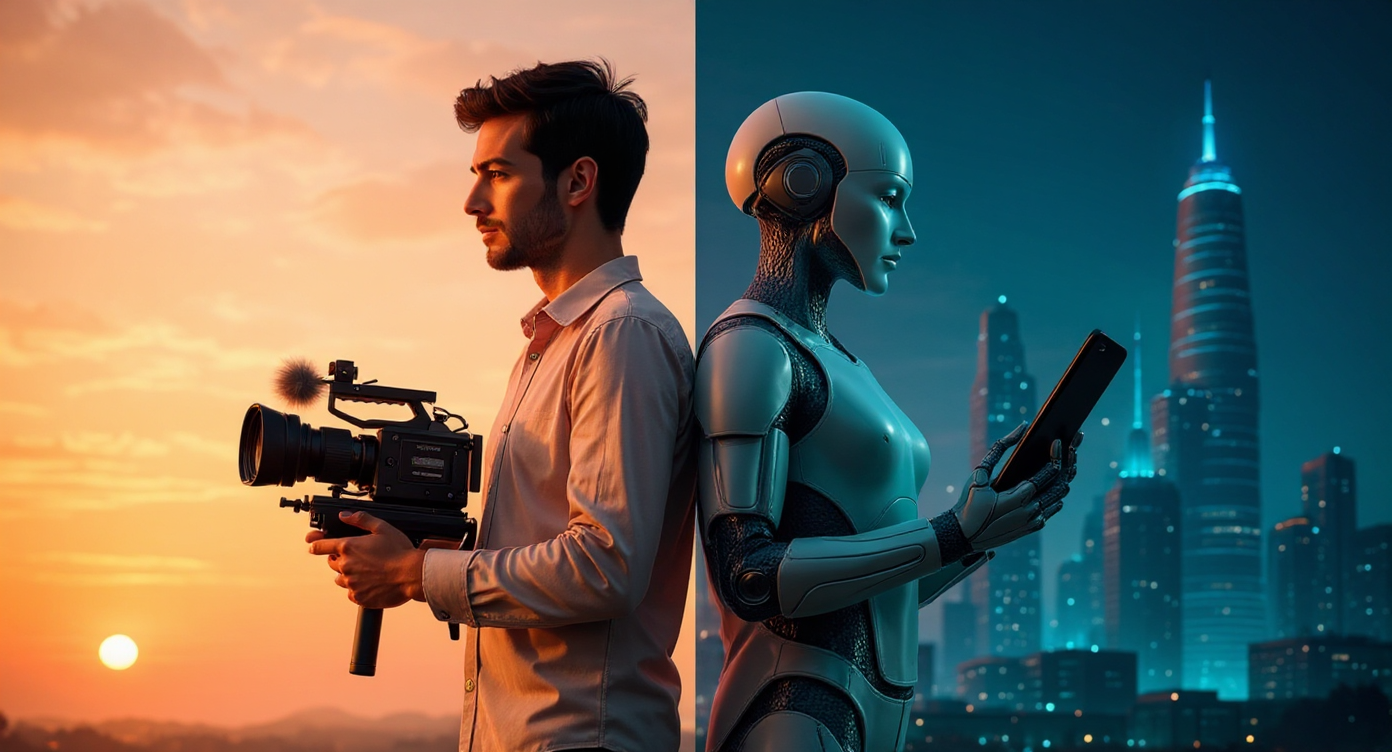“Is This Video Made by AI?”: The Curious Case of Creativity in the Age of Automation

In boardrooms, marketing meetings, and coffee chats with clients, a question echoes with growing intensity: “How much of this video was made by AI? ”It’s asked with curiosity, sometimes concern, and often with the implicit assumption that AI might have replaced the human hand in crafting visual stories—from explainer videos to full-fledged brand films. The answer is mor enuanced than a simple yes or no.
The rise of generative AI tools—such as OpenAI’s Sora (still under development), Runway, Pika, and Adobe’s own Firefly—has transformed parts of the video production pipeline. Text-to-image, text-to-video, automated voiceover synthesis, and even AI-powered editing assistants now promise faster turnaround and lower costs. But here’s the reality: the videos you see are still far from being entirely AI-made. At best, AI is a helpful intern. The director’s chair is still very much occupied by humans.
Automation, Not Autonomy
AI’s contribution to modern video production is best described as assistive, not autonomous. Generative models can produce assets—voiceovers, background visuals, synthetic characters, motion graphics templates. They can speed up storyboarding by generating concept art or animatics. Tools like Adobe Sensei embedded within Creative Cloud offer automatic object tracking, scene selection, and content-aware fill—useful, certainly, but not magic.
And yet, clients often perceive AI as an invisible engine that can take a script and spit out a compelling video in minutes. This is not how it works.
An explainer video, for instance, requires thoughtful narrative structuring, an understanding of the target audience, appropriate pacing, tone, and emotional cadence. Brand videos demand even more: resonance, symbolism, and visual storytelling that aligns with the company’s ethos. These are not elements that AI grasps intuitively. They are the product of human judgement—born of experience, empathy, and an awareness of cultural and psychological context.
The Human in the Loop
Even when AI generates an asset—a character animation, a synthetic voice, a stylized background—there’s always a human refining the result. Editors tweak the pacing, designers correct awkward proportions, directors reimagine compositions. AI cannot yet understand the intention behind a brand message, nor can it reliably sustain visual or tonal coherence across a multi-minute video without human oversight.
Indeed, current AI models often struggle with continuity, narrative cohesion, and adhering to a storyboard or script across shots. As researchers at Stanford and MIT have pointed out, generative AI lacks a theory of mind—it does not “understand” character motivation, audience reception, or subtext [1]. These are essential to brand storytelling.
Moreover, clients often underestimate the role of human correction—the hours spent revising AI-generated content to remove visual anomalies, inconsistencies, and narrative gaps. The irony is this: the more AI is used, the more essential human refinement becomes.
Why AI is Still Not the Director
It is tempting to think of AI as a threat to creative jobs, or as a shortcut to cheaper videos. But that vision is simplistic. In reality, AI expands creative possibilities rather than replacing creativity itself. Much like the arrival of digital cameras didn’t replace photographers, or Photoshop didn’t eliminate illustrators, AI in video production simply alters the toolkit.
In practical terms, most professional studios use AI to augment workflow efficiency. Voice cloning tools like ElevenLabs may be used for placeholder audio. Tools like Synthesia might be deployed for internal training videos where visual fidelity is not paramount. AI-assisted rotoscoping saves time. But the final product—the one that moves audiences and embodies a brand’s identity—is still the result of human-led design and storytelling.
The Future: Co-Creation, Not Substitution
Clients are right to ask about AI. Transparency matters. But the fear (or hope) that AI has replaced human creativity in video production is, for now, misplaced. What we’re witnessing isa shift towards co-creation: a partnership where AI handles the tedious and repetitive, while humans inject meaning, nuance, and strategy.
So next time someone asks, “How much of this was made by AI?”, the honest answer might be: “Some of it was helped by AI—but all of it was made by people.”
Great Stories Move People.
We craft videos and visuals that connect, inspire, and resonate.
Let’s create something worth watching — and remembering.
hello@allinmotion.com







